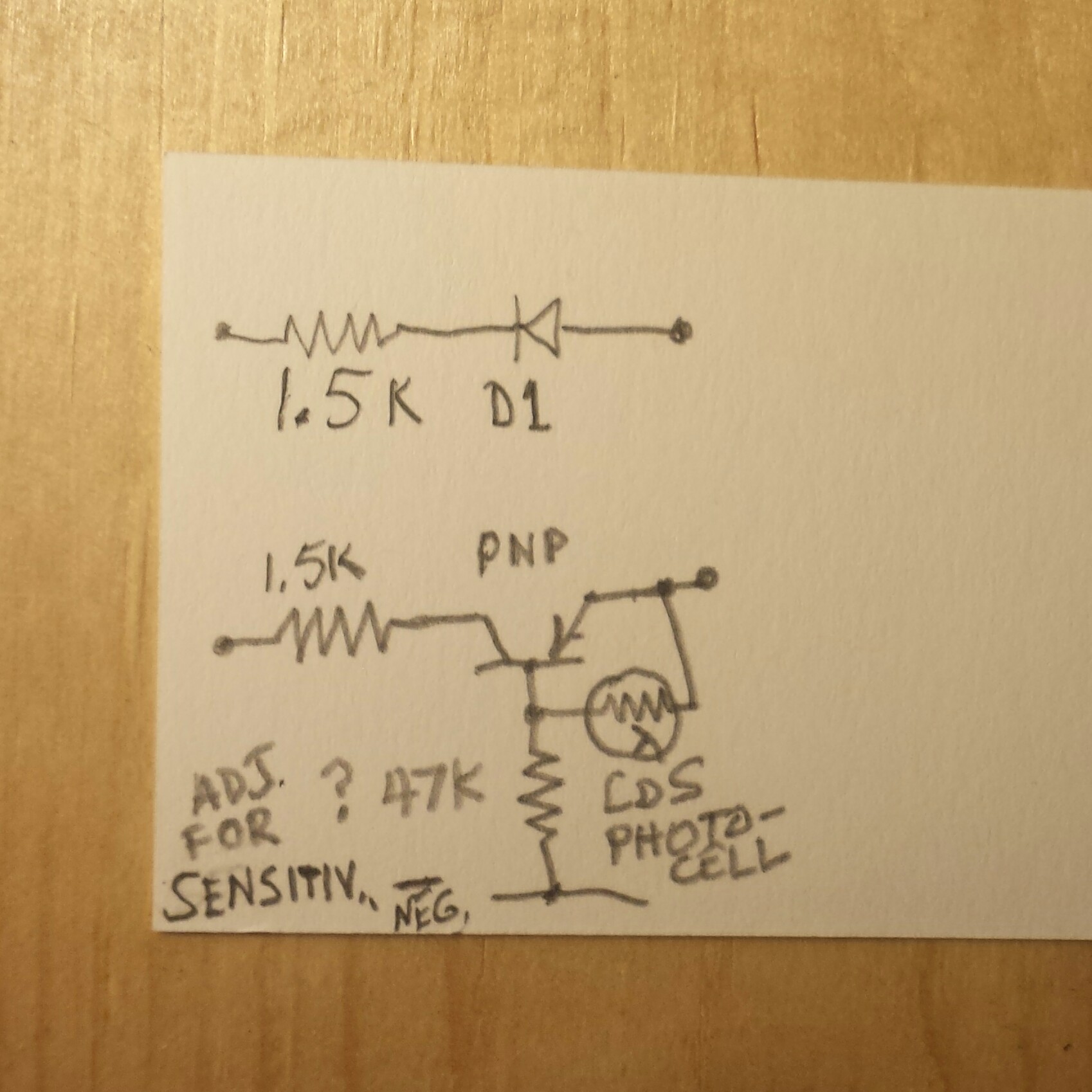I had a hard time editing the reply to #2 of the comment, besides it’s a good blog. The following applies to my Supercharged Joule Thief.
But you really don’t need to use a MOSFET. Any PNP transistor, 2N3906 or BC557, will do the job, and the current will be relatively low. Replace the diode with the transistor. Put a 47k resistor from its base to negative, and the photocell from base to emitter. The collector goes to the resistor. See the schematic photo.
I’ve never tried this circuit. Right now, the PNP makes sense because it should act like a diode. The PNP may have to be changed to NPN and flipped around and negative changed to the coil and collector as the diode, but that would seem to me like the NPN would then be reverse biased.
Anyhow I would want to modify one of my SJTs to see if it works. There may not be enough current to shut the NPN off, and what there is may cause the SJT circuit to not shut completely off.
I’ll update when I experiment.













Hm. I have some reservations about placing a regular pn junction device in the place of a shottky diode; we’d lose some efficiency when operating.
You’re correct about parts availability ofc. I like using jellybean parts whenever possible, and depletion p-chan mosfets aren’t common, but they are available. Mouser lists two; this one is 45 cents. http://www.mouser.com/ProductDetail/Texas-Instruments/CSD25483F4/?qs=sGAEpiMZZMshyDBzk1%2fWiwR5CZlvOXdbMyi5hKOrxAplvAju7cID5Q%3d%3d It’s also a microscopic package so it’d be a pita to hand solder, but it looks like it’d do. At 210 mOhm on state, it wouldn’t degrade the main npn’s operation much.
Trying it would be the only way to be sure if it works, though.
The transistor has less voltage drop than a schottky diode if the base current is enough current to force it to saturate. Any transistor can be saturated with less than 0.1 volt (or 0,1 V in Euro terms). It just depends on the base and collector currents. Search for BC547 datasheet .pdf and download it. You can see on the graph that at Ic=50 mA, the Vce(sat) is still below a tenth of a volt, much less than a Schottky diode.
If this P-ch has a resistance of 2 tenths of an ohm, and the peak current is half amp, then the voltage drop would be 0.1 volt. But a bypass capacitor in parallel could reduce the peak current to under 100 millivolts, so the drop would be much lower.
If you’re interested in experimenting with MOSFETs I have a lot of the 2N7000 that I could send you. Many other transistors also.
If we apply 0.9-1.5V to an LED, and let’s assume it’s a 2.5 or maybe 3.2V LED, how much leakage current do you think we can expect? nA? mA? Any idea?
Well, it’s a LED, so you can see the results in the dark. The LED will have a visible glow that depends on the voltage.
The LED is a diode, and like other diodes the current obeys an exponential curve as the voltage increases. Or looking at it from the other direction, the current obeys an exponential decrease as the voltage decreases. At the voltages stated, the current may be so low that it doesn’t cause visible light. But assuming the LED obeys the exponential curve, then there is a small current but it depends on the voltage.
You might try putting a digital voltmeter in series with a LED. DVMs have a typical resistance of 10 Megohms. You can then calculate the diode forward current. But remember that there is a voltage drop across the meter. And to complicate things, if you put another DVM across the meter or diode, it will upset the current because part of the current will then be going through the other DVM.